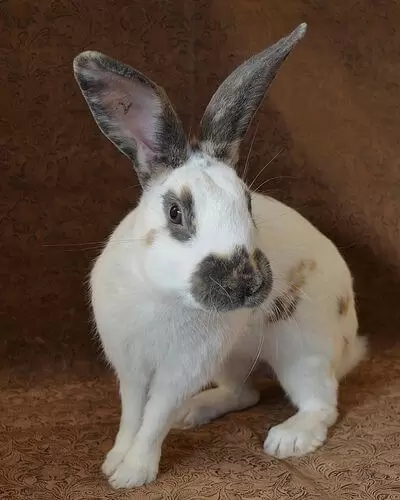- COUNTRY OF ORIGIN: Germany
- YEAR RECOGNIZED: 1975
- USES: Show, meat
- WEIGHT: 10 pounds (4.5 kg) max., senior does
- BODY TYPE: Full arch
- FUR TYPE: Flyback; ARBA Commercial Normal Fur Standard; short, dense, fine, smooth in texture
COLOR:
Black and golden-orange or blue and fawn on a white background with dark colors evenly distributed over all marked areas
THE COLOR PATTERN IS THE HALLMARK of this breed: with distinct two-color markings on a white body, a streak along its spine, a dark butterfly mark on its muzzle, and dark eye bands, the Rhinelander is nearly unmistakable. A medium-sized rabbit, with an adult buck showing ideally at 8 pounds (3.6 kg), the Rhinelander has a fairly long body with a graceful, hare-like arch and dense, silky fur. It carries its ears in a V shape. It is challenging to exhibit because of the exacting color distribution standards.
The Rhinelander was developed by Josef Heintz in Germany in the late 1800s. Heintz used Harlequin Rabbits, a gray non-purebred rabbit, and Checkered Giants in his breeding program. The name “Rhinelander” reflects the breed’s German roots, as in the Rhine River region.
The Rhinelander made its debut in the United States in 1923 but vanished from the American rabbit fancy less than a decade later. It made a comeback in the 1970s and reappeared on the ARBA breeds roster in 1975, but it remains an uncommon breed.

